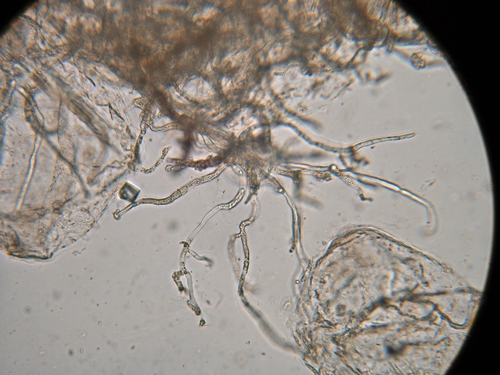Mark Bolda and Steven Koike, UC Cooperative Extension
The recent spate of rainy weather in the Watsonville-Salinas strawberry production district has created ideal conditions for fruit rot caused by Phytophthora. Significant fruit loss is being observed in some fields, and indeed several samples were recently brought to the UCCE diagnostic lab in Salinas and tested positive for Phytophthora.
Phytophthora rot of fruit, known as leather rot, can affect immature green or pink fruit (photo 1) as well as fully ripened red fruit (photos 2 and 3). Symptoms consist of off-white, gray, or yellow-brown lesions. Lesions often begin as localized, circular to oval shaped infection areas that later enlarge into irregularly shaped patches that can affect much of the fruit. The infected area is very soft to the touch. Fruiting bodies or other fungal structures are not seen externally on these lesions. Upon examining internal fruit tissues with a microscope, the diagnostic appearance of the mycelium (relatively thick hyphae that lack cell cross walls) can be observed (photo 4). Phytophthora cactorum is the primary species causing this fruit rot; this same pathogen can also cause crown rot disease.
Growers and PCAs should be reminded that anthracnose fruit rot, caused by Colletotrichum acutatum, may appear similar to Phytophthora infections. However, anthracnose fruit lesions are sunken, oval to round, firm in texture, and brown to dark brown in color (photo 5). In advanced stages and under suitably wet conditions, anthracnose lesions may show white mycelium and salmon to orange colored spore masses of the fungus.
Attached Images:




